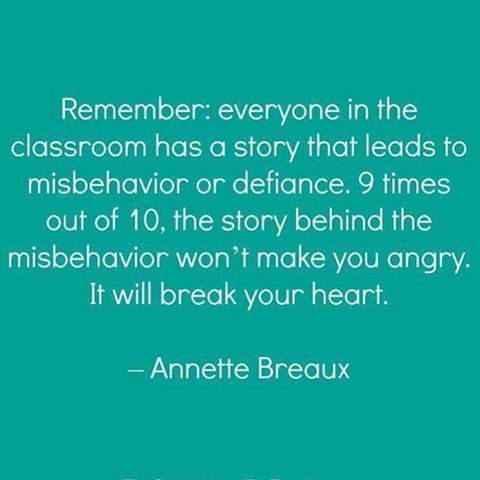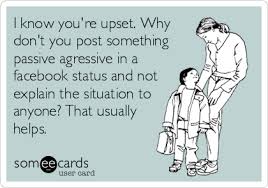Archive for October, 2016
SUNDAY STRATEGY: Listening & Building Self-Regulation in Kids
0Last week, I had the joy of bringing LSCI Certification training to the staff at my “home” school–Circle of Seasons Charter School in the Lehigh Valley of Pennsylvania. We spent four days learning about, talking about, watching videos about, and role playing various situations about how to effectively reach and teach challenging children and youth.
One of the things that makes LSCI so powerful of a strategy with students is that it gives adults very specific skills with which they can learn to LOOK BEYOND SURFACE BEHAVIOR and understand the unique beliefs, perceptions, thoughts, and feelings that drive disruptive or disrespectful behavior. LSCI teaches that effective listening is the path to self-regulation in students and show adults the importance of how to listen in order to:
- de-escalate
- understand a child’s perspective
- build insight and understanding
- cultivate trusting relationships
- teach new skills
- create long-term changes in behavior
- and so much more!
If you’d like to learn more about this powerful training experience, I invite you to visit www.lsci.org, contact someone who has recently attended an LSCI training, or email me at swhitson@lsci.org.
Why Mental Health Training is Essential for Classroom Teachers
0“The Failing First Line of Defense” is a fantastic, important, insightful article by Jessica Lahey in The Atlantic that shines a light on the gap in mental health training traditionally offered to classroom teachers–who are so often a student’s first line of defense when it comes to revealing mental health issues.
Certification in the skills of LSCI is an excellent way to bridge the gap and help educators gain understanding of and competence in brain-based, trauma-informed, mental-health intervention strategies. Find out more at www.lsci.org or email swhitson@lsci.org to plan training for your staff.
http://www.theatlantic.com/education/archive/2016/10/the-failing-first-line-of-defense/504485/
How to Recognize & Respond to Passive-Aggressive Behavior
0Through my work as a child and adolescent therapist and a school counselor, I have seen how destructive of a force anger can be—both when it is expressed in uncontrolled, aggressive ways, but also when it is acted out in highly controlled but hidden behaviors, such as passive-aggression. Passive aggressive behavior as a deliberate but covert way of expressing feelings of anger (Long, Long & Whitson, 2009) and is most often motivated by a person’s fear of expressing anger directly. The  passive-aggressive person believes life will only get worse if other people know of his anger, so he expresses his feelings indirectly, using a variety of behaviors to subtly “get back” at another person. While anger itself is generally experienced as an uncomfortable emotion, the passive-aggressive person derives genuine pleasure out of frustrating others, hence our label of the behavior as “the angry smile.”
passive-aggressive person believes life will only get worse if other people know of his anger, so he expresses his feelings indirectly, using a variety of behaviors to subtly “get back” at another person. While anger itself is generally experienced as an uncomfortable emotion, the passive-aggressive person derives genuine pleasure out of frustrating others, hence our label of the behavior as “the angry smile.”
If your interactions with a child, a parent, a teacher, a student, a spouse, a co-worker, a boss, or even an online acquaintance leave you feeling like you have been on an emotional roller coaster, chances are good you may be dealing with a passive aggressive person. Some of the most common red flags of this behavior include things like:
- Withdrawing and sulking, rather than stating opinions or needs.
- Using words like “Fine” and “Whatever” to shut down a discussion.
- Procrastinating or carrying out tasks inefficiently
- Giving lip service to doing things differently in the future, while knowing they don’t plan to change their behavior.
The ultimate red flag is that passive-aggressive people cause others to eventually blow up and in a very real sense, act out the anger that the passive-aggressive person had been silently harboring.
There are many reasons why people choose to sugarcoat their anger but what most passive-aggressive people have in common is that they grew up with developmental conditions that made hidden expression of anger feel like their only tenable choice. For the purposes of this post, let me lay out two distinctions:
- First, we know that some young people are raised in families where they know they will be met with harsh physical punishment or retribution if they express dissatisfaction or unhappiness. Kids walk on eggshells around angry, aggressive, authoritarian adults, and learn quickly that their only safe option is to hide their true feelings.
- At a different extreme, there are kids who grow up in families in which appearances means everything. The normal, human emotion of anger must be subordinated to family facades. In this type of outwardly perfect family, kids are socialized to believe that anger = bad and that good kids never show anger.
In both type of upbringings, kids learn that open, honest, direct expression of anger would be unacceptable. And yet these feelings don’t just disappear. Rather, they tend to re-surface through patterned, but covert misbehaviors such as carrying out chores incorrectly or pretending not to hear their name when they are called—things that create minor but chronic frustration for the authority figures in their lives.
There are five distinct and increasingly pathological levels of passive aggressive behavior, ranging from the everyday to the truly troublesome. Learning to readily recognize the behavior at any level is your first step toward avoiding being drawn into a passive-aggressive conflict cycle—a power struggle with no winners.
To learn more about the 5 levels of passive aggressive behavior, please read the remainder of this post on its original site on Psychology Today:
https://www.psychologytoday.com/blog/passive-aggressive-diaries/201610/understanding-passive-aggressive-behavior



